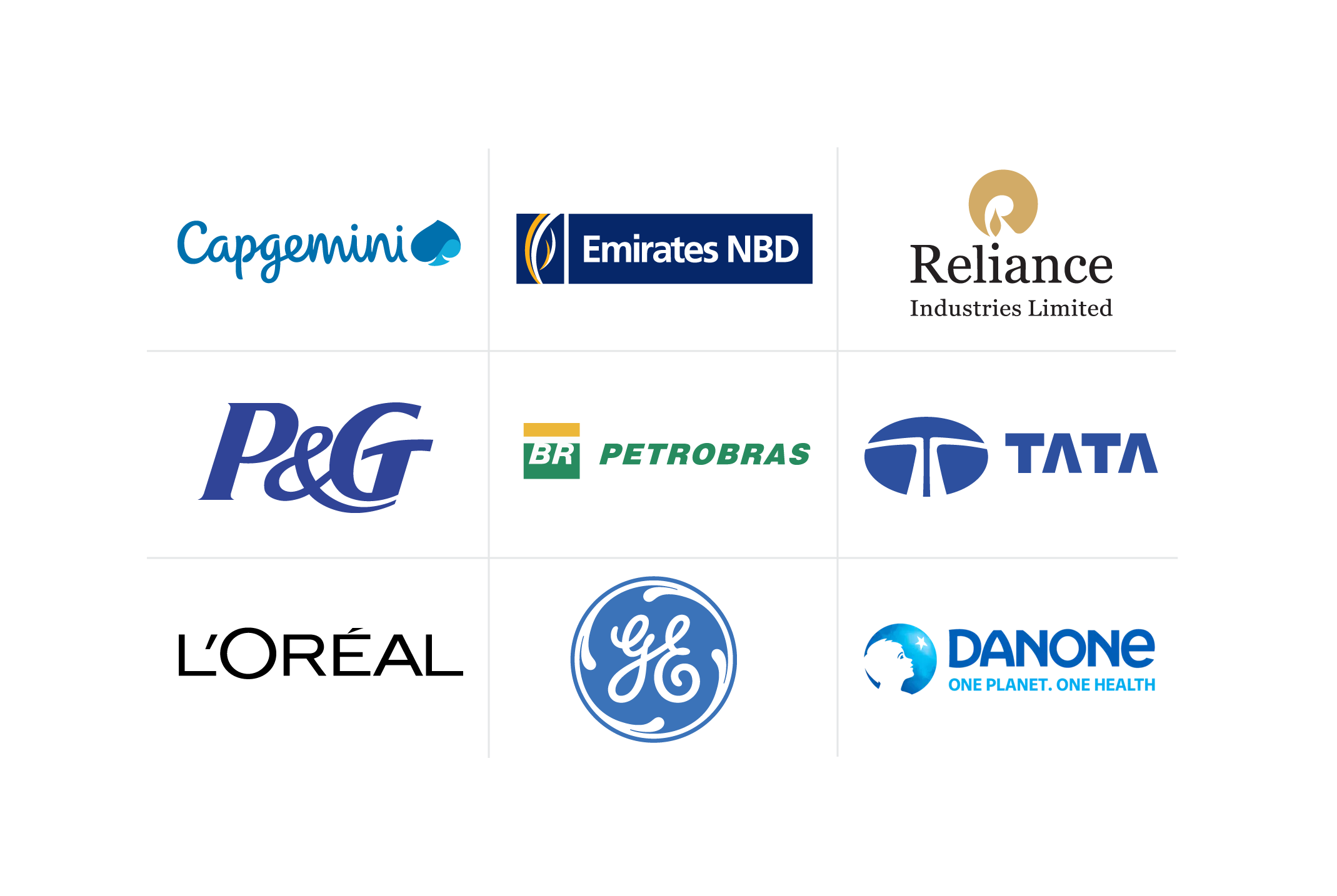Maximizing Returns: The ROI of Learning and Development in Corporate Training
Discover why it’s important to measure the ROI of learning and development initiatives and explore methods and metrics to determine the best way to demonstrate the ROI of training programs.
![[Featured Image] A program coordinator evaluates various metrics to calculate the ROI of learning and development programs while preparing a presentation for the company’s leadership team.](https://d3njjcbhbojbot.cloudfront.net/api/utilities/v1/imageproxy/https://images.ctfassets.net/2pudprfttvy6/2LWjHumzEZDNggsPEYvztY/5110578afeeb2b24acb77a1e5e36fc74/GettyImages-1326070170.jpg?w=1500&h=680&q=60&fit=fill&f=faces&fm=jpg&fl=progressive&auto=format%2Ccompress&dpr=1&w=1000)
Like any other corporate investment, you can measure the ROI of learning and development programs to better understand how effectively they contribute to organizational goals. The benefits of learning and development programs, like increased employee happiness, productivity, and retention, make them an attractive option for organizations interested in improving the skills of their workforce and positioning their employees for future leadership roles.
One of the challenges of developing a learning and development program is justifying the need for the program to key stakeholders and leadership in your organization. Demonstrating the ROI of training programs can help leadership visualize the benefits of investing in learning and development programs, which is why measuring ROI is essential. This article will explore different methods and metrics for calculating the ROI of learning and development efforts to help you overcome similar obstacles you may face at your organization.
What is the ROI of learning and development?
Measuring the ROI of your learning and development programs can aid you in making data-driven decisions about how best to spend your organization’s training resources. Simply put, your ROI is the reason you invest in training in the first place: to gain a benefit for your company.
Learning and development programs offer many different benefits to companies, such as improved company culture, stronger candidates, better employee retention, and increased productivity, to name a few. However, without doing the work to measure your ROI, it can be challenging to see the connection between spending time and resources on training to improve outcomes in organizational goals. When you measure your ROI and look for ways to improve it, you can maximize the benefits of training programs, gain more buy-in from critical stakeholders, and make informed decisions to optimize your learning and development budget.
Calculating and measuring learning and development ROI
One of the reasons it can be challenging to measure the return on your investments in learning and training is that it doesn’t always follow the traditional calculations for ROI, and it can be more complex than measuring the ROI for other investments. Consider, for example, that you invest in a machine that allows you to make twice as many widgets as you were previously able to. You can measure the ROI by determining how much value the added production adds to your bottom line and subtracting all the costs associated with purchasing and operating the additional machine. The quantitative nature of the data makes it straightforward to factor in the return on your investment.
When it comes to learning and development efforts, many factors you measure will be qualitative, such as employee happiness and job satisfaction, customer experience, or improved office communication. This can make it more challenging to articulate the ROI of learning and development efforts.
Before you can calculate the ROI of learning and development in your company, you also have to determine what metrics will demonstrate success according to your goals for the training program. Additionally, you might invest in training programs for skills like communication or teamwork that require you to consider different metrics for success. Depending on your company's goals for the training program, some metrics to consider include key performance metrics like employee retention, customer retention, sales figures, and more.
Kirkpatrick’s Four Levels of Training Evaluation
In the book Kirkpatrick’s Four Levels of Training Evaluation by James D. and Wendy Kayser Kirkpatrick, the authors suggest four levels for evaluating the ROI of training programs for a holistic view of the benefits the company gains. Training professionals have used the Kirkpatrick Model to assess programs in different industries and on various training topics such as leadership development, DEI, product launches, and more. According to the model, you can gather data about the ROI of your training program from four levels [1]:
Reaction: You can measure how people react to training data to determine how they perceive the main thoughts of the training and whether they will incorporate the training principles into their work.
Learning: You can determine how much participants retain from training by measuring their baseline knowledge on the topic before training and repeating the measurements after training to compare how much they learned.
Behavior: You can decide how much employees have benefited from training by observing them before and after training, looking for differences in their habits or work patterns.
Results: You can measure the ROI of learning and development by looking at the results of the key performance metrics you outlined as relevant to your company, such as overall productivity, employee retention, or customer happiness.

How to measure ROI of learning and development
Now that you’ve explored some of the methods for calculating the ROI of learning and development, it’s time for a closer look at the steps you will take to determine the ROI of your programs.
Step 1: Start with a needs assessment.
One way to get the highest return on investment for learning and development training programs is to conduct a needs assessment to determine which learning programs will make the most significant difference in your key performance indicators. When you complete a needs assessment, you take inventory of the skills and knowledge your workforce needs to be successful in each role of your company or organization. Then, you compare those skills with the skills currently represented by your team. This practice will give you insight into what areas could benefit the most from learning and development, which will increase your ROI by targeting skills development with the most significant impact.
Step 2: Define your measurables.
Once you’ve identified your training needs, you can start to think about what outcome you want to achieve with learning and development training. What measurable factors will shift for your organization after you’ve completed training? In this step, you will link your training to organizational goals, such as increased efficiency, profit, or employee retention.
Step 3: Determine your metrics and key players.
The next step is to determine the metrics you will use to measure success and gather a team of key players participating in the learning and development process. Depending on your goals for training, you may need to use a combination of quantitative and qualitative metrics. Quantitative metrics, including the revenue generated in the last quarter or the number of customers who made purchases, are data-based and more straightforward to calculate. Qualitative metrics aren’t always associated with hard data but are also essential KPIs to consider, such as employee morale or customer happiness. Bringing key players into the process early can help you ensure that your training and development efforts align with company goals and objectives and encourage accountability and transparency.
Step 4: Gather data and benchmark your results.
At this point, you can implement your learning and development program and gather the data that will inform your analysis. You will follow the plan you outlined in previous steps to collect qualitative and quantitative data related to your company objectives. You can also prioritize metrics by determining critical metrics and secondary options that could also be helpful but are less essential. This will help you maximize the ROI because you will reaffirm how your training supports organizational goals.
Step 5: Communicate and fine-tune your process.
The last step of the process is to analyze the data, communicate your findings to all key players, and determine how you will improve your learning development program in the future to increase the ROI of later efforts. If your learning and development efforts are ongoing, you can use the results to improve your program in real time. Otherwise, you can make recommendations to improve future learning experiences and go back to step one to determine the next most effective learning outcomes for your company.
Getting started with Coursera
Measuring the ROI of learning and development initiatives is vital in planning training budgets, maximizing your use of resources, and maintaining the backing of crucial people supporting the company’s learning and development efforts. Now that you’ve explored some metrics and methods for measuring the ROI of learning and development, you may want to take the next step and learn more about planning and executing effective learning and development programs to get the most significant ROI you can.
With Coursera for Business, you can train teams across your organization in the skills that matter most in today’s digital economy. Your employees will gain access to content from 350+ leading universities and industry partners, where they can build real-world experience with innovative skills, tools, and technologies while earning globally recognized credentials. Our customizable, scalable learning solutions balance workplace and technical skills training in diverse formats, from video clips to guided projects and Professional Certificates. Accelerate your digital transformation and equip employees to drive growth with Coursera.
Article sources
Kirkpatrick Partners. "The Kirkpatrick Model, https://www.kirkpatrickpartners.com/the-kirkpatrick-model/." Accessed June 17, 2025.
This content has been made available for informational purposes only. Learners are advised to conduct additional research to ensure that courses and other credentials pursued meet their personal, professional, and financial goals.

